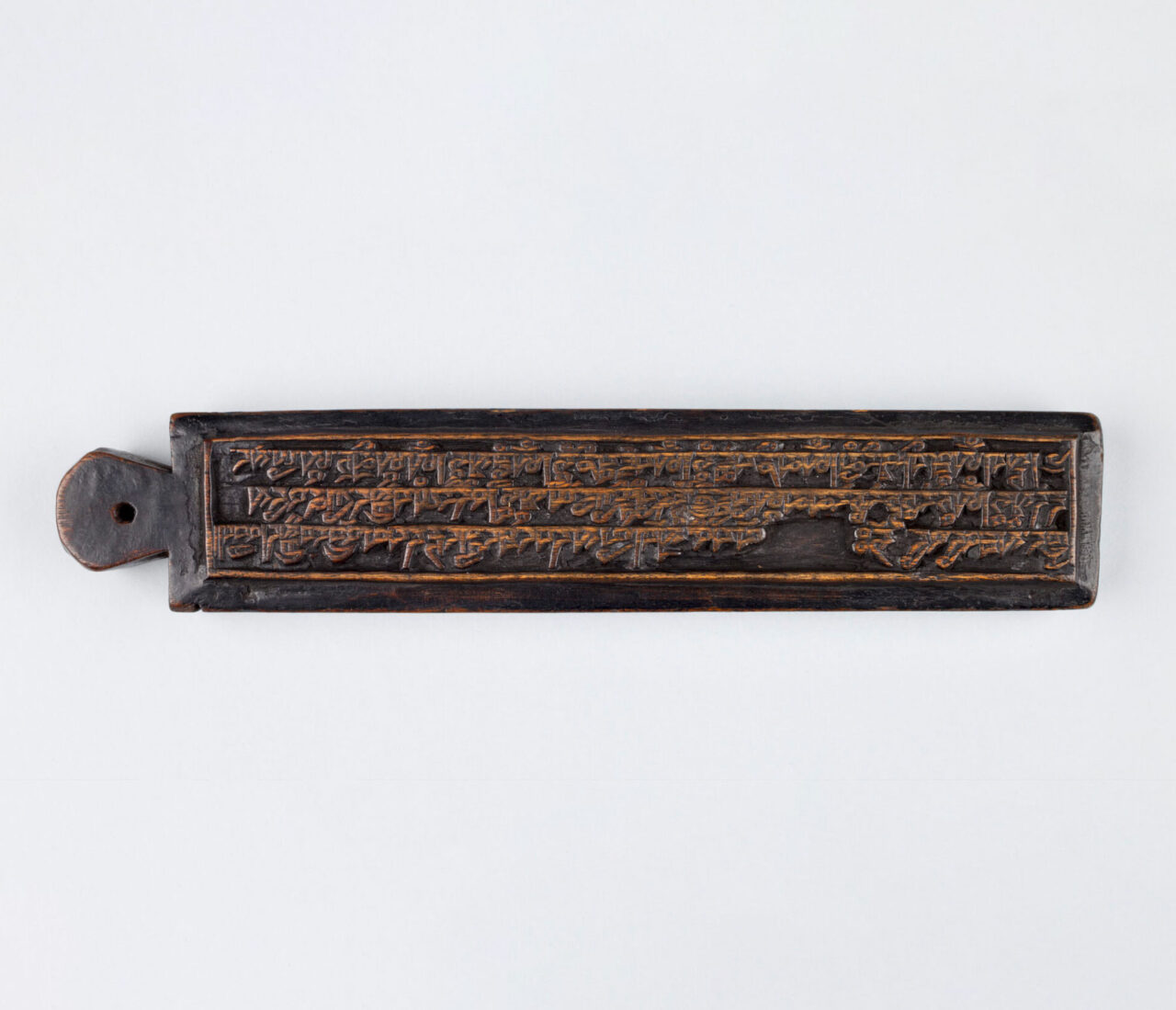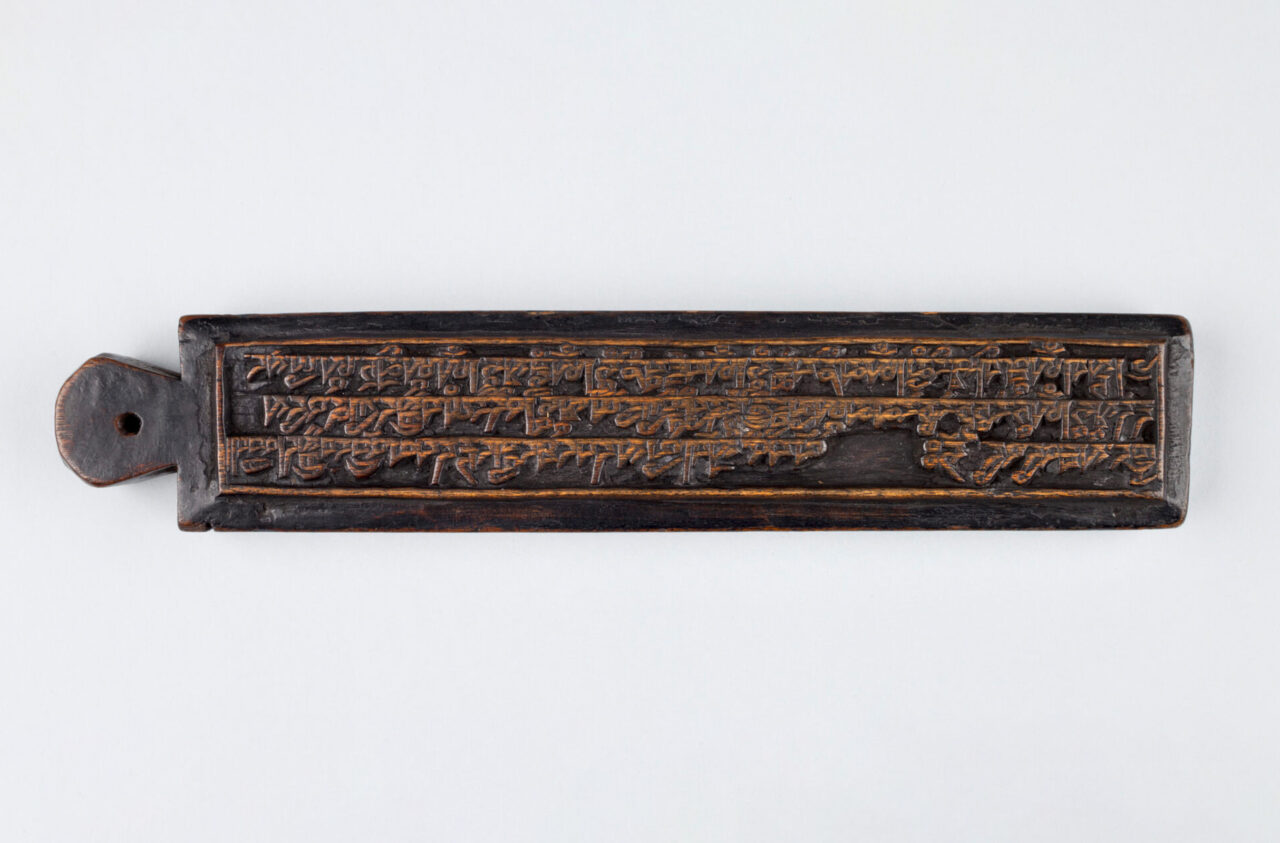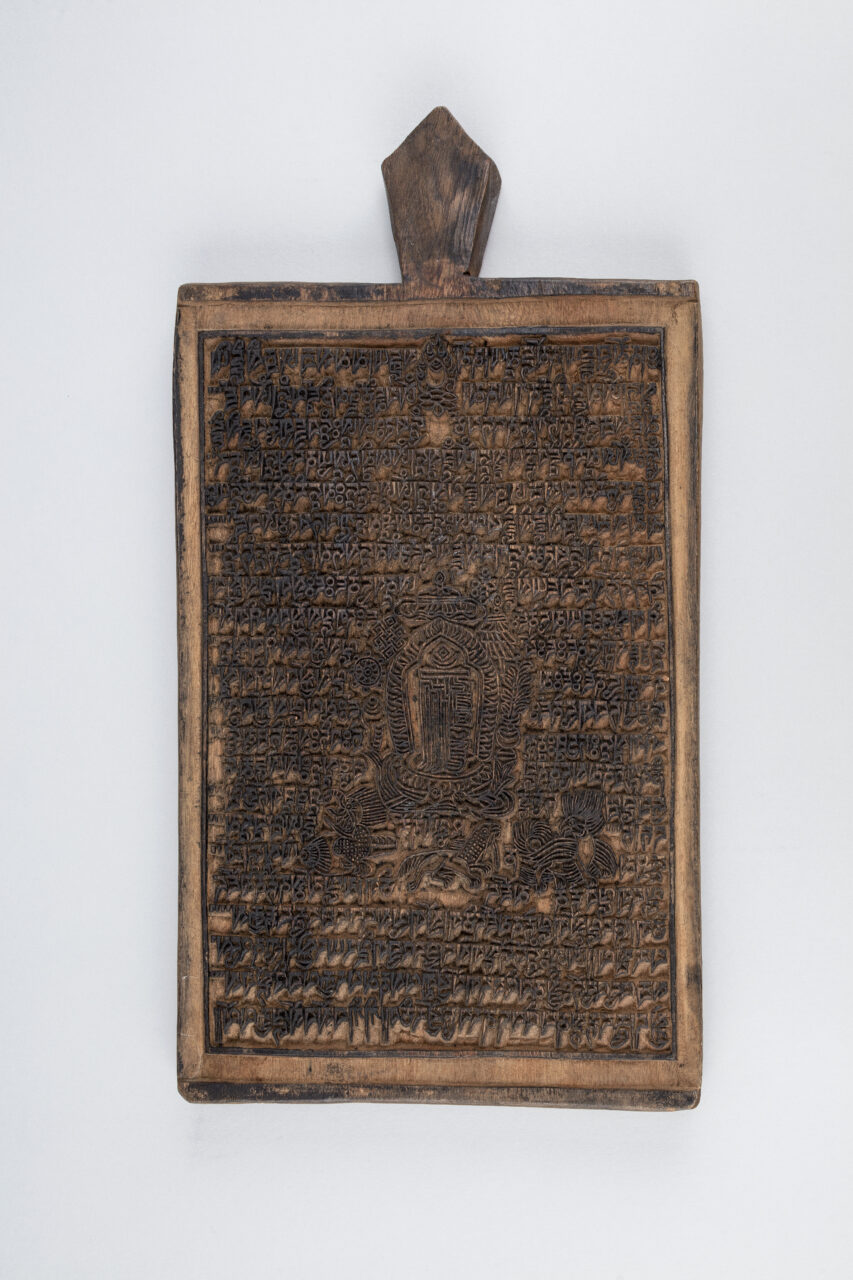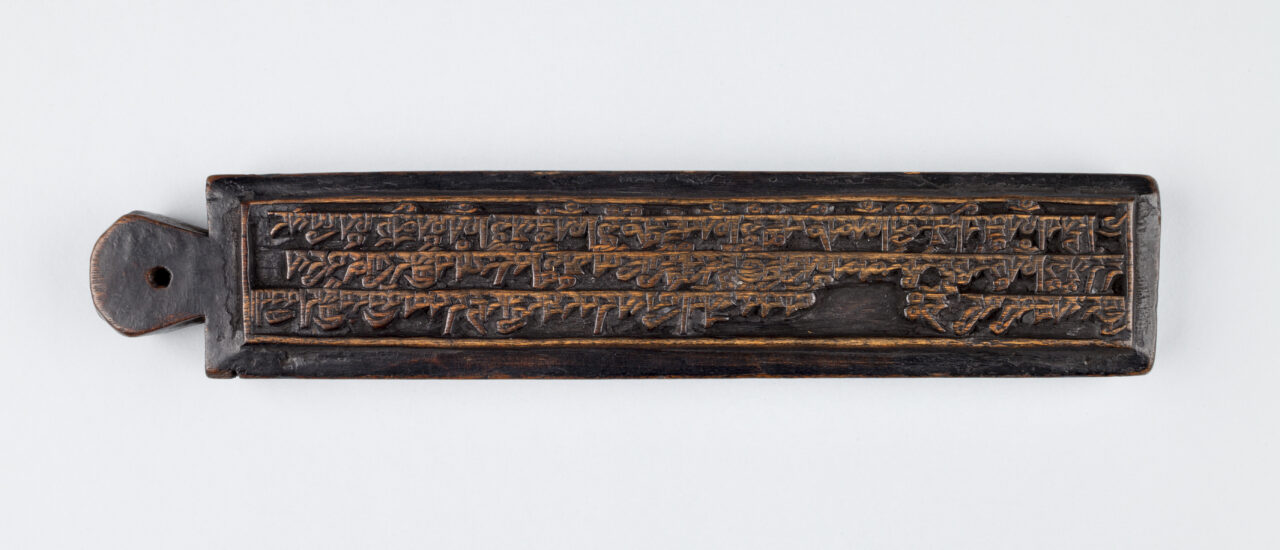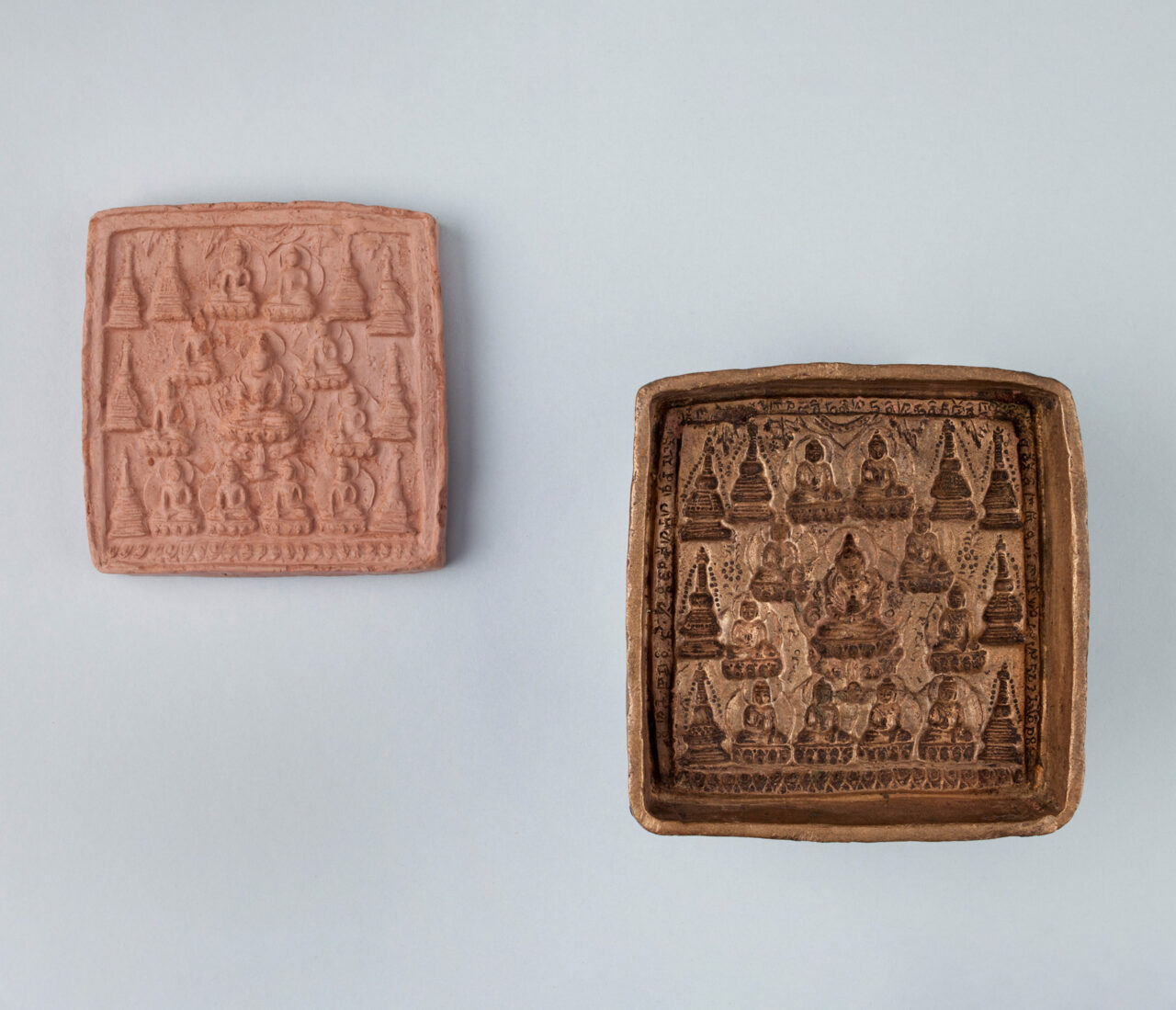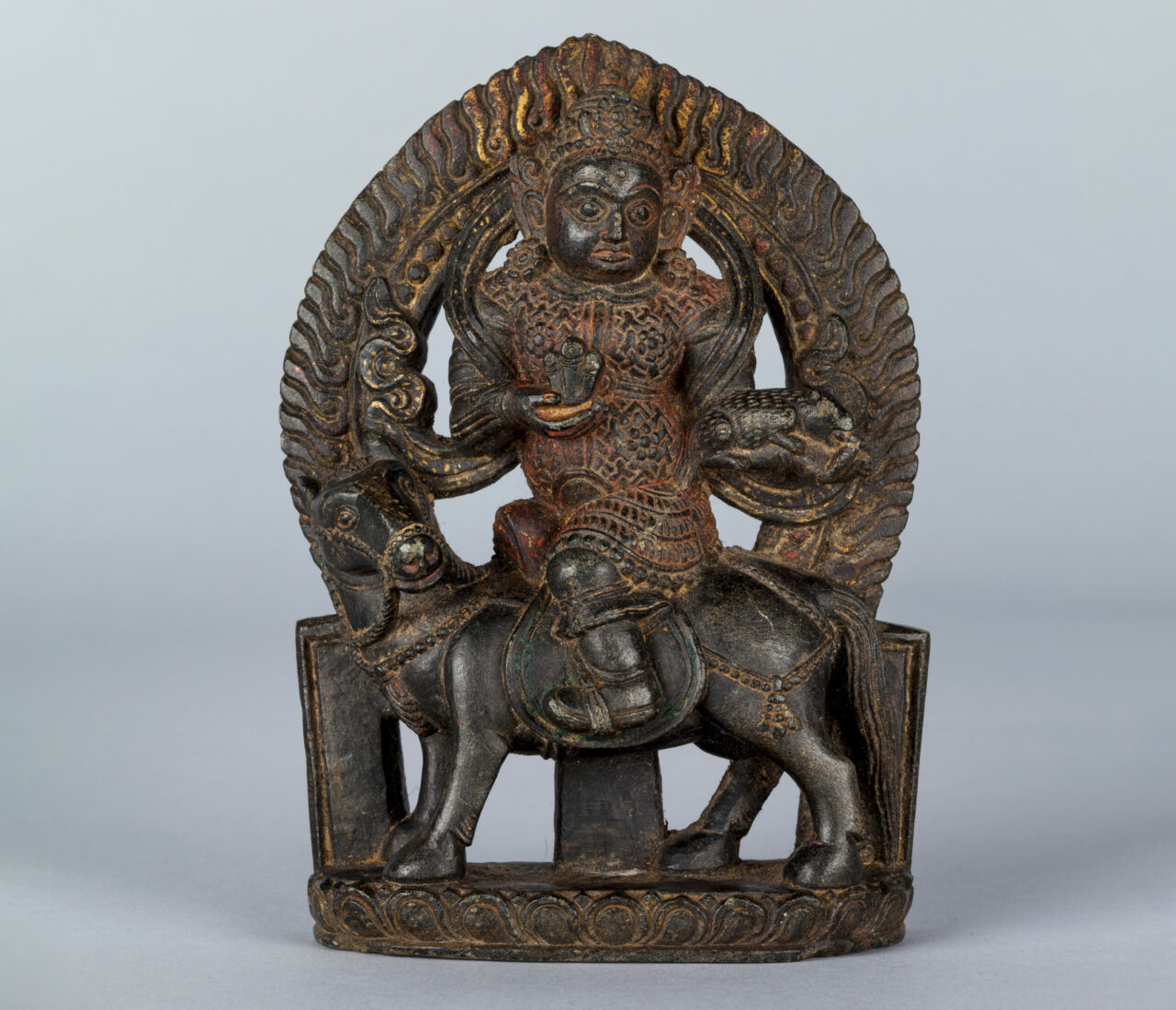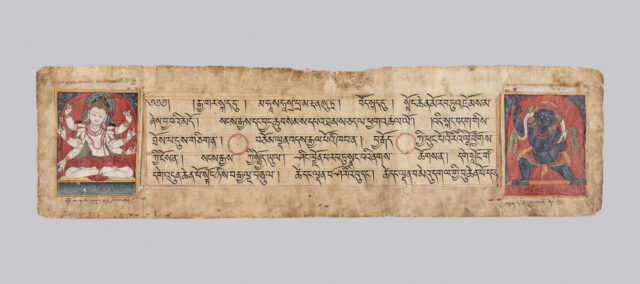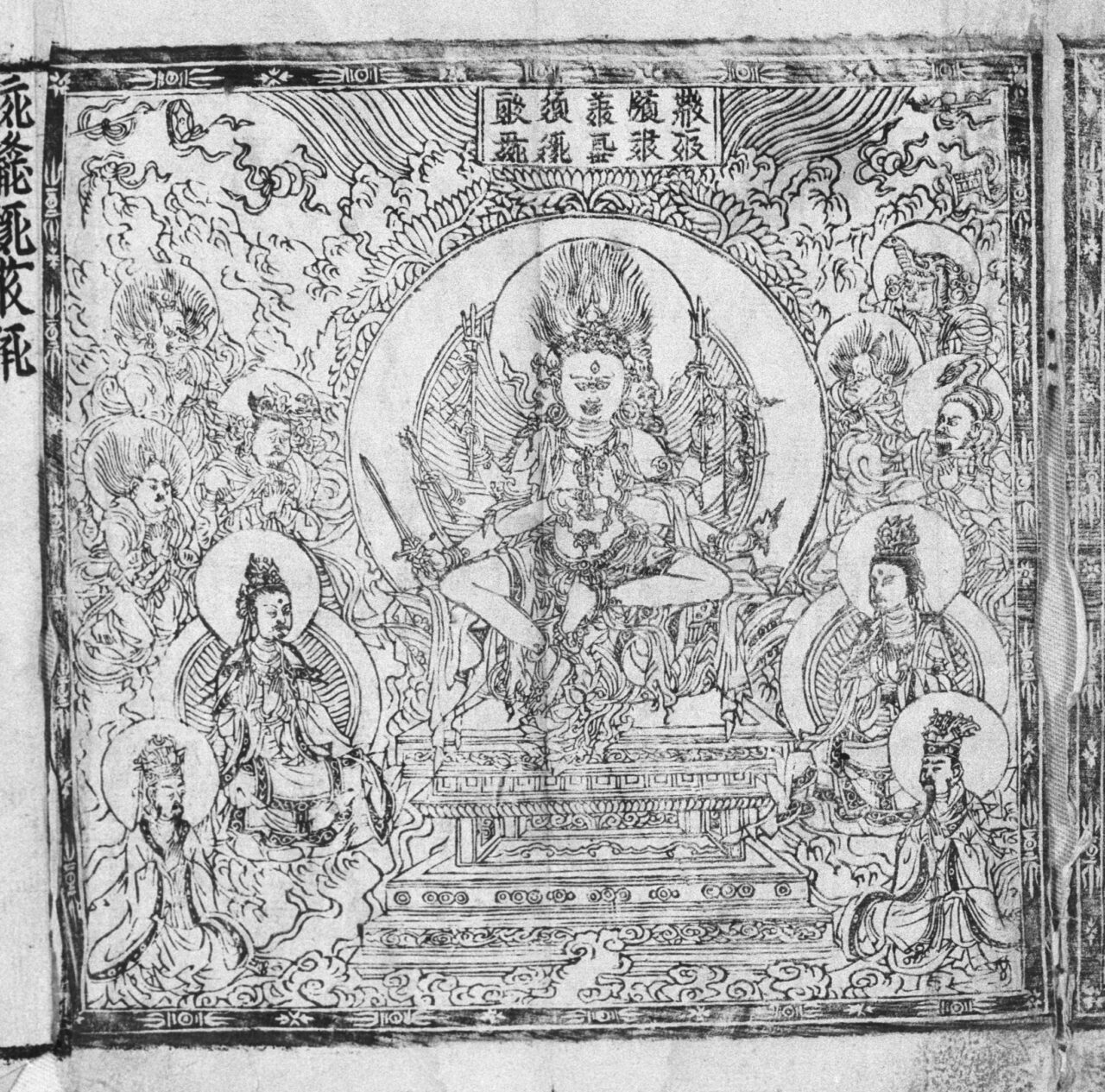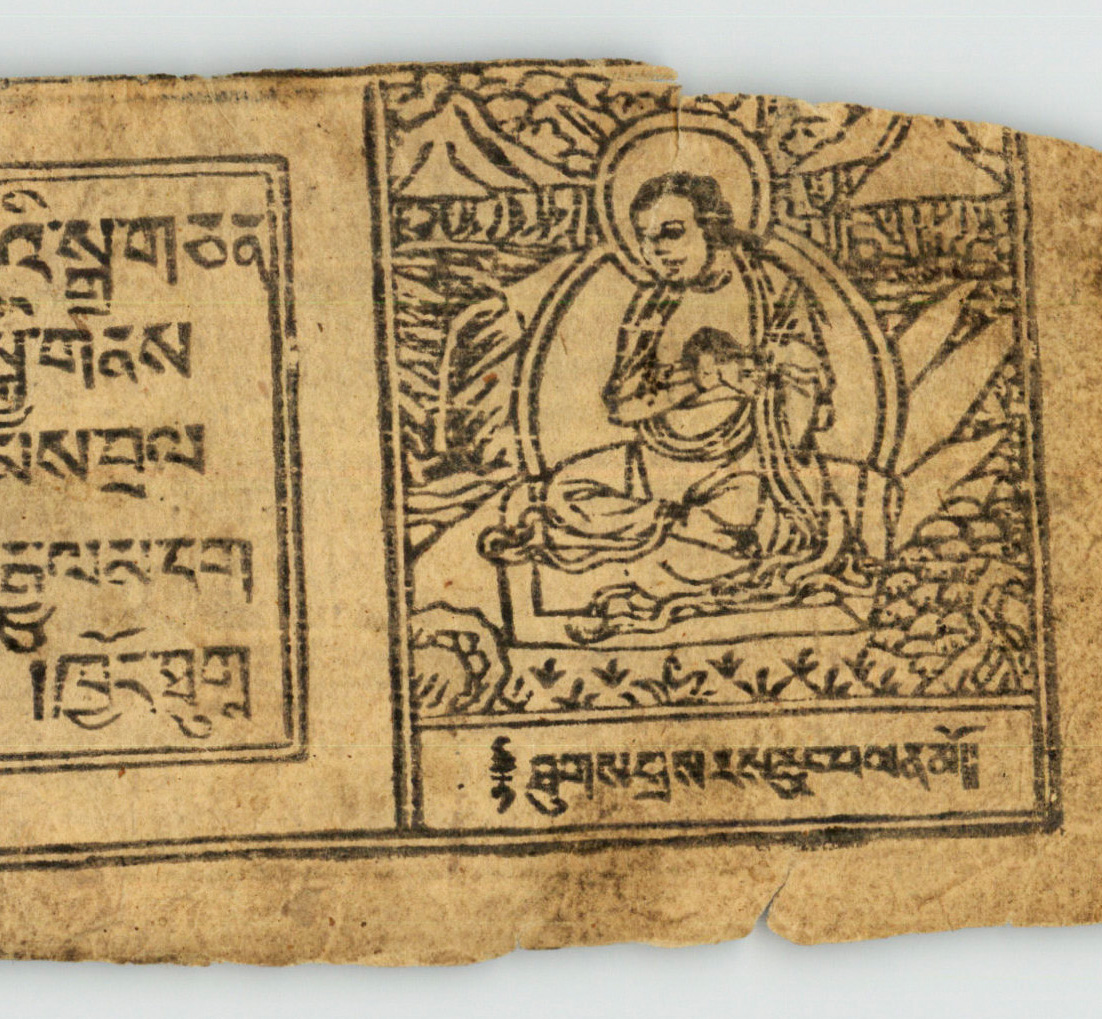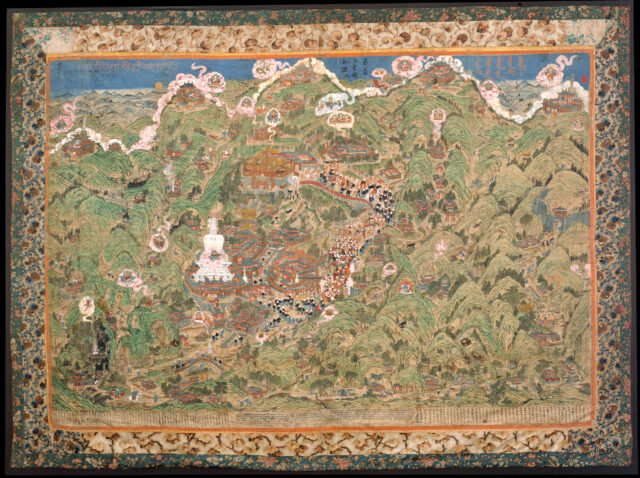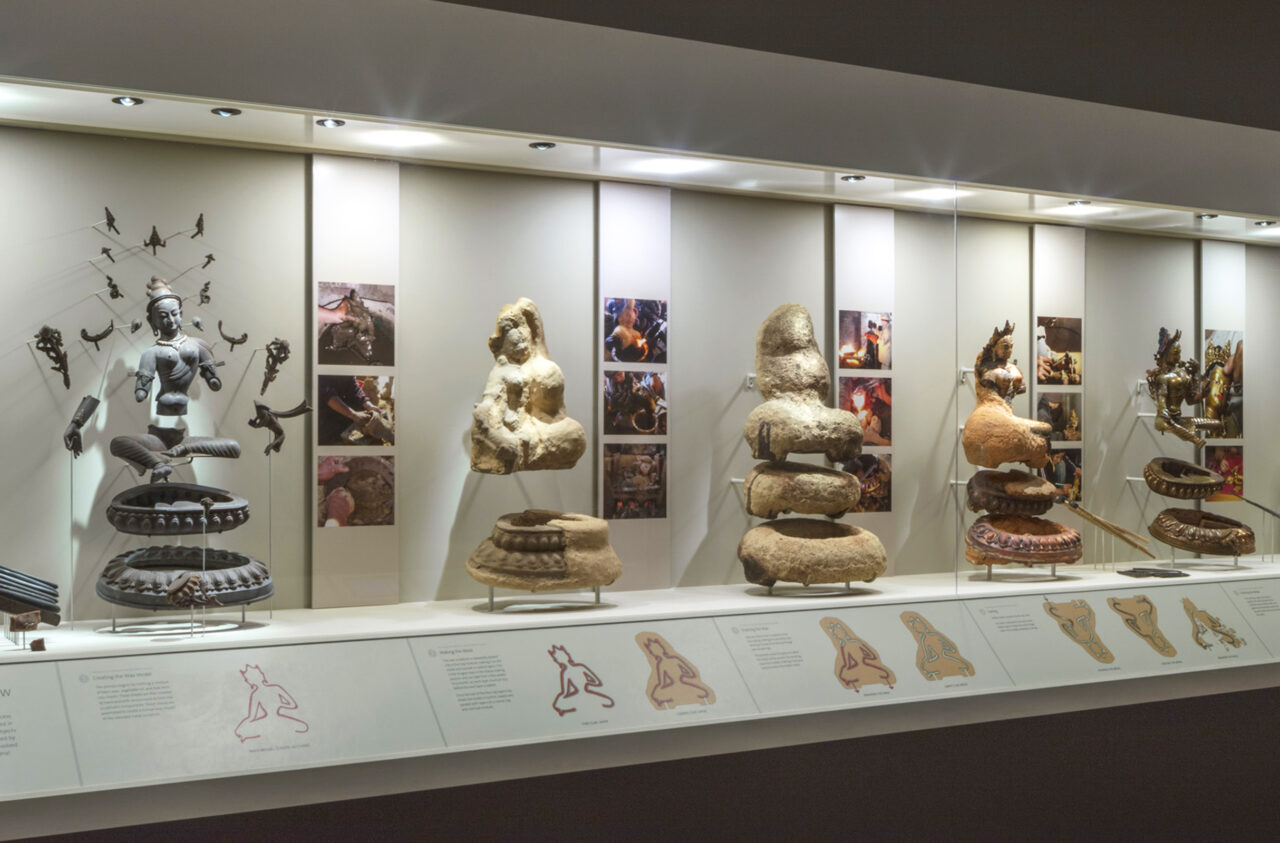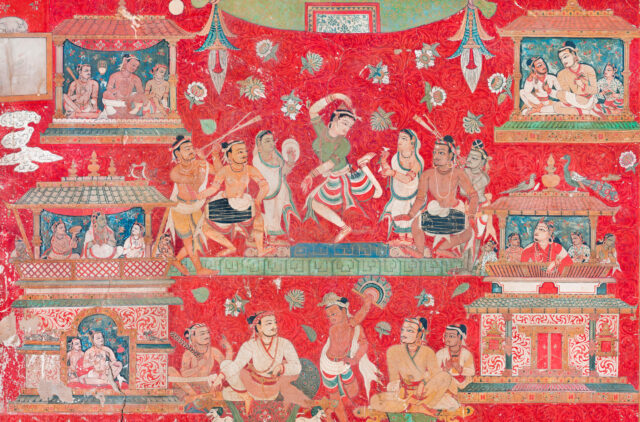The invention of printing can be directly connected to Buddhism and the need to reproduce religious texts and simple pictures of the Buddha. This demand greatly influenced the development of printing technology. Text reproduction began with stamping and rubbing, which led directly to block printing.
Wood is widely used to produce woodblocks, which are carved in negative relief and intended for printing images, texts, prayer flags, initiation cards, and images used as charms in amulets (fig. 1). Printings from such blocks can also be used to mass produce important visual compositions for series of paintings, canonical texts, and collected works of famous teachers, as well as prayer flags (fig. 2).
The Chinese craftsmen were the first to use this process to print texts, beginning sometime before the seventh century, and Tibetans adopted the block printing technology as early as the twelfth century.
The video below shows present-day craftsmen making woodblocks at the Degé printing house.
